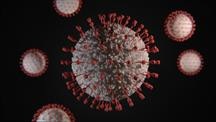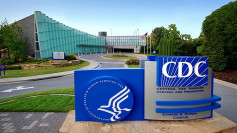As the United States grapples with the pervasive spread of the JN.1 variant, the latest iteration of COVID-19, both the medical community and the public are bracing for its implications. This subvariant of Omicron, first identified by the World Health Organization in late August, has seen a meteoric rise in prevalence, now constituting approximately 86% of all COVID-19 cases in the country as of January 20th, according to the Centers for Disease Control and Prevention (CDC).
Eyal Oren, a seasoned epidemiologist at San Diego State University's School of Public Health, highlighted the variant's swift ascendancy. "Most likely, if you're getting COVID right now, you're getting this particular variant mutation," Oren stated, underscoring the rapid evolutionary pace of the virus that continues to outstrip our collective immunity.
This development arrives amidst a backdrop of lackluster vaccination rates, with only 11% of children and 21% of adults having received the updated COVID-19 vaccine. The figure is slightly better among the elderly, the demographic most susceptible to severe outcomes, with 40% having received their shots in the past year. These numbers are alarming given the proven efficacy of vaccines in mitigating severe illness and hospitalizations.
The CDC has raised alarms over the triple threat posed by the concurrent surges in flu, RSV, and COVID-19 cases. This confluence of viral activity threatens to exert unprecedented strain on healthcare capacity, prompting the agency to issue an alert to healthcare workers last month.
Symptomatically, JN.1 does not appear to introduce any novel manifestations, with the CDC reporting a consistent profile that includes fever, coughing, muscle aches, and shortness of breath, among others. However, distinguishing these symptoms from those caused by other prevalent winter viruses remains a challenge.
To counteract the surge, Oren advocates for a layered approach to prevention, emphasizing vaccination, mask-wearing, hand hygiene, and the avoidance of crowded settings. "And if you're sick, stay home," he adds, echoing a sentiment that has become a mainstay in public health advisories since the pandemic's onset.
Despite the daunting rise in hospitalizations across all age groups, there's a silver lining. The latest data suggests that JN.1 does not lead to more severe disease outcomes than its predecessors. Dr. Eduardo Azziz-Baumgartner, chief of the global influenza branch in the CDC's Influenza Division, indicated that early signals suggest the variant may not exacerbate symptom severity, a perspective that awaits further substantiation as more data becomes available.
The federal government has responded by offering free rapid COVID-19 tests to households, an initiative aimed at bolstering testing and containment efforts. As the situation unfolds, the medical community and policymakers remain vigilant, ready to adapt strategies to the evolving landscape of the pandemic. With the collective effort of the public and healthcare professionals, there's cautious optimism that the challenges posed by JN.1 can be navigated effectively, safeguarding public health and maintaining the momentum towards a semblance of normalcy.






